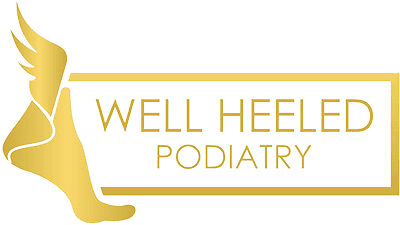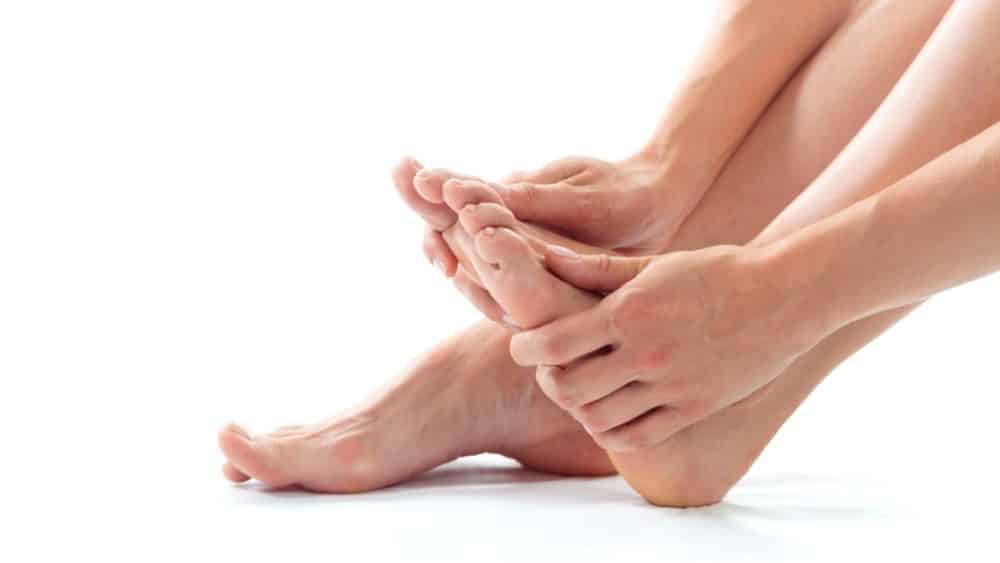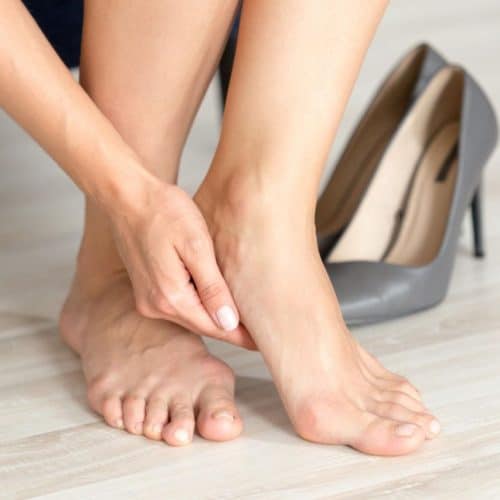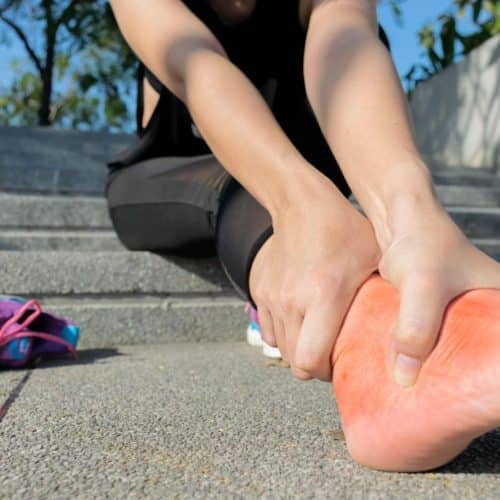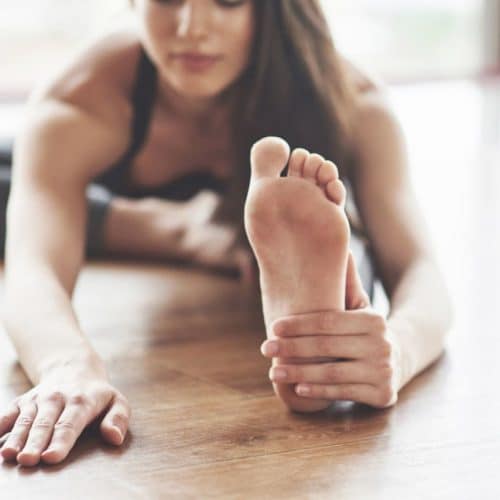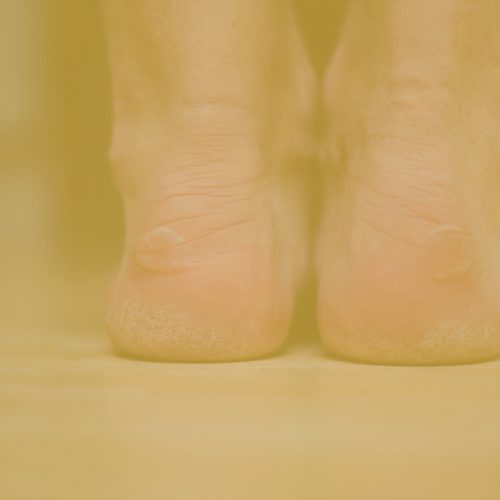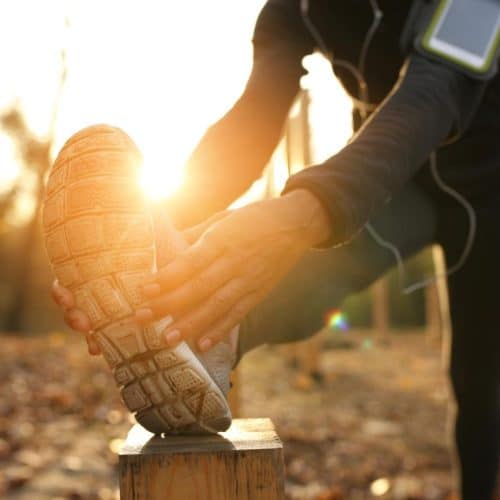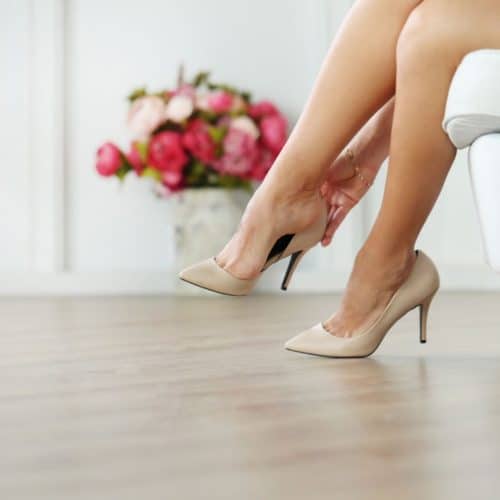Pain in the heel is a frequent complaint that can make it difficult to participate in everyday activities and lowers overall quality of life. The good news is that there are a few different workouts that can assist in reducing the severity of this soreness. In this article, we will discuss several useful exercises that can help ease discomfort in the heel.
Causes of Heel Pain
1. Plantar Fasciitis
- Description: This is one of the most common causes of heel pain. It involves inflammation of the plantar fascia, a thick band of tissue that runs from the heel to the toes.
- Symptoms: Sharp pain at the bottom of the foot, especially upon waking up or after prolonged sitting.
2. Heel Spurs
- Description: These calcium deposits form a bony protrusion on the underside of the heel bone. They often develop alongside plantar fasciitis but can occur independently.
- Symptoms: Intermittent or chronic pain while walking or running.
3. Achilles Tendinitis
- Description: This condition is an Achilles tendon inflammation, which connects the calf muscles to the heel bone.
- Symptoms: Pain and stiffness along the Achilles tendon, especially in the morning or after exercise.
4. Bursitis
- Description: Bursitis of the heel is the inflammation of the bursa, a small sac filled with fluid at the back of the heel.
- Symptoms: Pain and swelling at the back of the heel, especially when walking or wearing shoes that press against the heel.
5. Tarsal Tunnel Syndrome
- Description: The posterior tibial nerve compression causes this condition as it passes through the tarsal tunnel, a narrow space near the ankle bone.
- Symptoms: A burning pain, tingling, or numbness in the sole.
6. Stress Fractures
- Description: These are tiny breaks in the heel bone, often caused by repetitive stress or overuse, such as in athletes or individuals with increased physical activity.
- Symptoms: Pain that increases with activity and decreases with rest, swelling, and tenderness at a specific point.
7. Rheumatoid Arthritis
- Description: This autoimmune disease can affect the joints in the foot, including the heel.
- Symptoms: Joint pain, swelling, and stiffness, which may be more pronounced in the morning.
8. Gout
- Description: Gout is arthritis caused by the accumulation of uric acid crystals in the joints.
- Symptoms: Sudden, severe pain, usually in the big toe, but can also affect the heel, along with redness and swelling.
9. Peripheral Neuropathy
- Description: This condition involves damage to the peripheral nerves, often due to diabetes.
- Symptoms: Tingling, numbness, or burning pain in the feet.
Effective Exercises for Heel Pain Relief
1. Calf Raises
1. Bilateral Calf Raises
- Description: This exercise targets the gastrocnemius and soleus muscles in the calf, which can help alleviate heel pain.
- How to Do: Stand with your feet hip-width apart on a flat surface. Slowly raise your heels off the ground, pushing through the balls of your feet. Hold the raised position for a few seconds, then lower back down. Repeat 10-15 times.
- Variation: Hold dumbbells in your hands or use a resistance band for added resistance.
2. Single-leg Calf Raises
- Description: This variation focuses on one leg at a time, offering a more intense workout for the calf muscles.
- How to Do: Stand on one foot, with the other foot slightly off the ground. Raise your heel off the ground, balancing on the ball of your foot. Lower and repeat 10-15 times before switching to the other foot.
2. Plantar Fascial Release
- Description: This exercise helps release tension in the plantar fascia, a thick band of tissue that runs across the bottom of your foot.
- Using a Spiky Ball or Trigger Ball: Place the ball under your foot and roll it back and forth, applying gentle pressure. Spend extra time on any particularly tender areas. Do this for 2-3 minutes on each foot.
3. Calf Stretching
- Description: Stretching the calf muscles can help alleviate tension that contributes to heel pain.
- How to Do: Stand facing a wall with your hands pressed against it. Step one foot back, keeping both heels on the ground. Bend the front knee while keeping the back leg straight. You should feel a stretch in the back of your leg. Hold for 20-30 seconds and switch legs.
4. Toe Extension Stretching Against a Wall
- Description: This stretch targets the plantar fascia and can help relieve tension and pain.
- How to Do: While facing a wall, place the toes of one foot against it while keeping the heel on the ground. Gently lean forward, keeping your back straight, until you feel a stretch along the bottom of your foot. Hold for 20-30 seconds and switch feet.
5. Foot Flexing and Pointing
- Description: This simple exercise can help strengthen the muscles in the foot and improve flexibility.
- How to Do: Sit comfortably with your legs extended in front of you. Flex your feet, pulling the toes towards you, then point them away. Repeat this motion 10-15 times.
6. Ankle Circles
- Description: This exercise promotes flexibility and circulation in the ankle joint, which can indirectly help with heel pain.
- How to Do: Sit or lie down in a comfortable position. Lift one foot off the ground and rotate your ankle in a circular motion. Do 10 circles in each direction, then switch to the other foot.
Importance of Footwear
Proper footwear is essential for foot health and heel pain prevention. Fitted, supportive shoes decrease pressure on the foot’s muscles and ligaments, maintaining optimum alignment and balance. However, ill-fitting or unsupportive shoes can worsen foot issues and cause new ones. Shoes without arch support can stretch the plantar fascia, causing plantar fasciitis. High heels and shoes with tiny toe boxes can squeeze the foot, causing bunions or neuromas.
Shoe cushioning protects the heel bone from trauma, especially when sprinting or leaping. Thus, good-quality, supportive shoes are comfortable and prevent foot diseases like heel discomfort. Get your feet measured periodically and wear shoes that fit your foot anatomy and demands. Shoes developed for certain sports or hobbies might be beneficial. Custom orthotics or shoe inserts can address particular foot issues and abnormalities for maximum foot health.
Rest and Recovery
Rest and healing are key to heel pain management and prevention. Our feet hold the weight of our bodies and are constantly stressed, especially during exercise. This constant strain can cause wear and tear, leaving the feet more prone to injury and discomfort. Heel discomfort requires listening to the body and giving it time to heal. Pushing through discomfort or ignoring it might worsen the disease or postpone healing.
Breaks, elevating the feet, and avoiding pain-intensifying activities can speed recovery. Cold compresses can reduce inflammation and provide comfort. It’s important to remember that recovery goes beyond relaxation. Proper nourishment, water, and mental relaxation aid healing. A doctor may recommend modest foot stretches or exercises to improve blood flow and flexibility. Giving the feet time and care to recuperate helps with instant alleviation and long-term foot health and functionality.
Consultation
Consultation with a podiatrist is crucial when dealing with persistent or severe heel pain. While many minor foot discomforts can be addressed with home remedies or over-the-counter solutions, some conditions require expert intervention for accurate diagnosis and treatment.
A consultation provides an opportunity for a thorough examination of the foot, including physical assessments, imaging studies, and a review of one’s medical history and lifestyle habits. This comprehensive approach ensures that the root cause of the pain is identified, be it due to structural abnormalities, underlying medical conditions, or specific injuries.
Moreover, a podiatrist can offer tailored advice and treatment plans, ranging from specific exercises and stretches to medications, orthotic devices, or surgical interventions in extreme cases.
They can also guide preventive measures, footwear recommendations, and lifestyle changes to minimise the risk of future issues. Furthermore, regular consultations can help monitor the progression or regression of a condition, allowing for timely adjustments in treatment strategies.
While self-care and general knowledge are valuable, seeking a professional consultation ensures that heel pain is addressed effectively and safely, preventing potential complications and ensuring optimal foot health.
Conclusion
Heel pain can be incapacitating at times, but it can be managed with the appropriate treatment and exercises. Remember to pay attention to what your body needs, and make sure to include these workouts into your regular routine. If the discomfort does not subside, you should seek medical attention. Because they transport you everywhere you go, it is crucial that you take excellent care of your feet.

